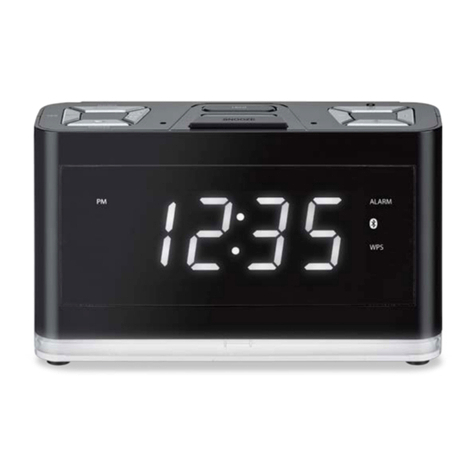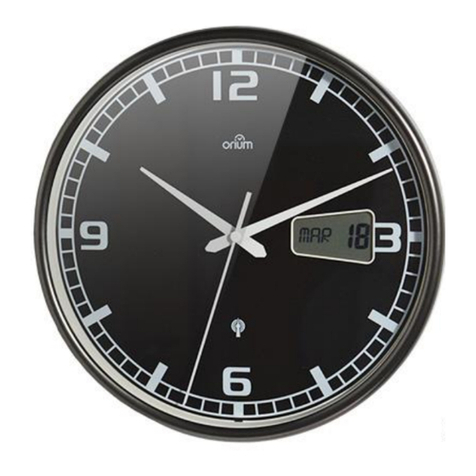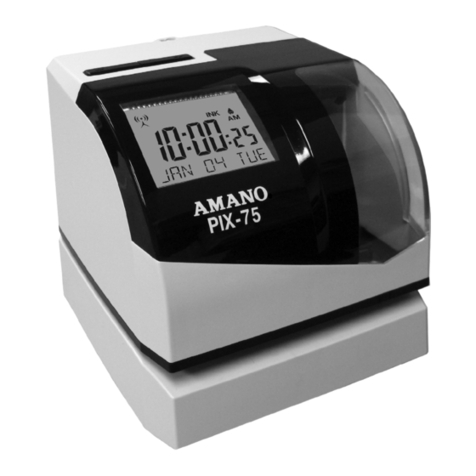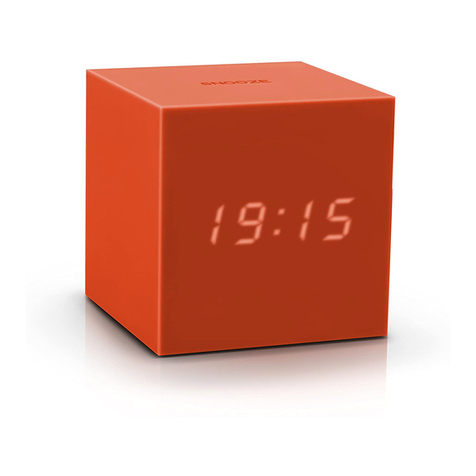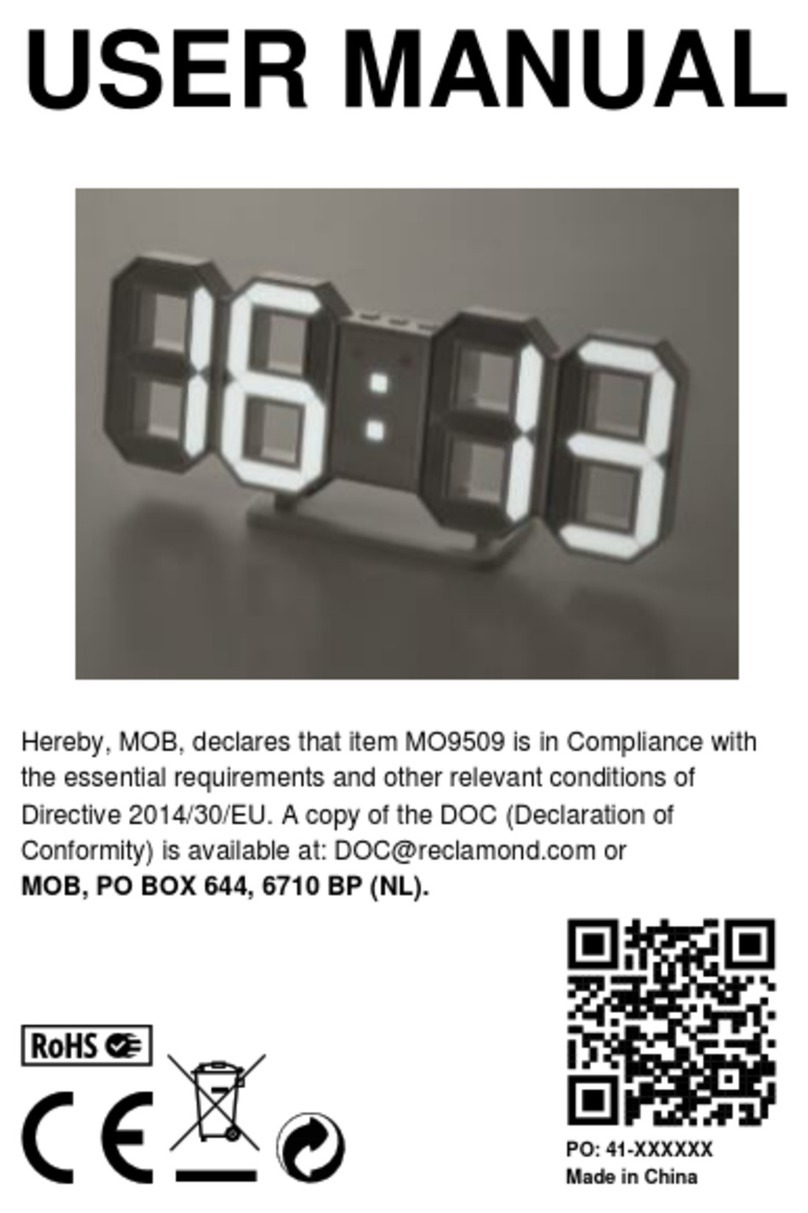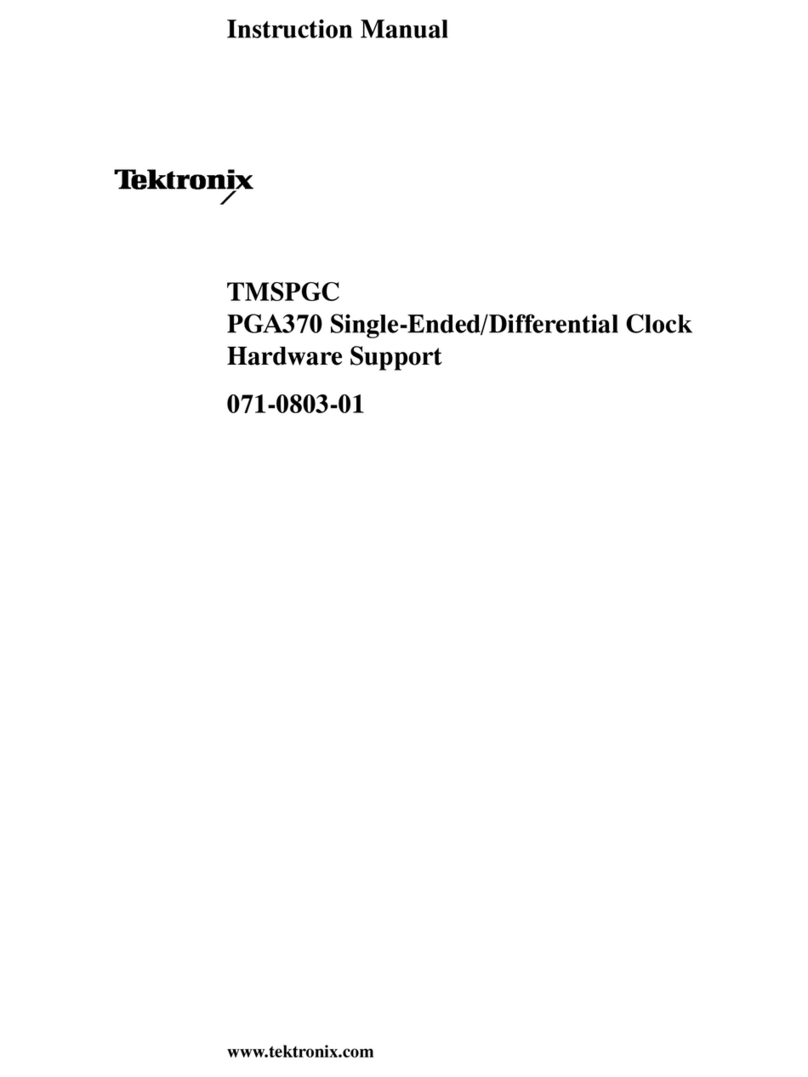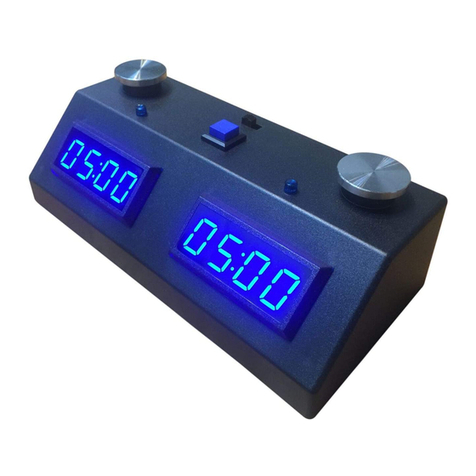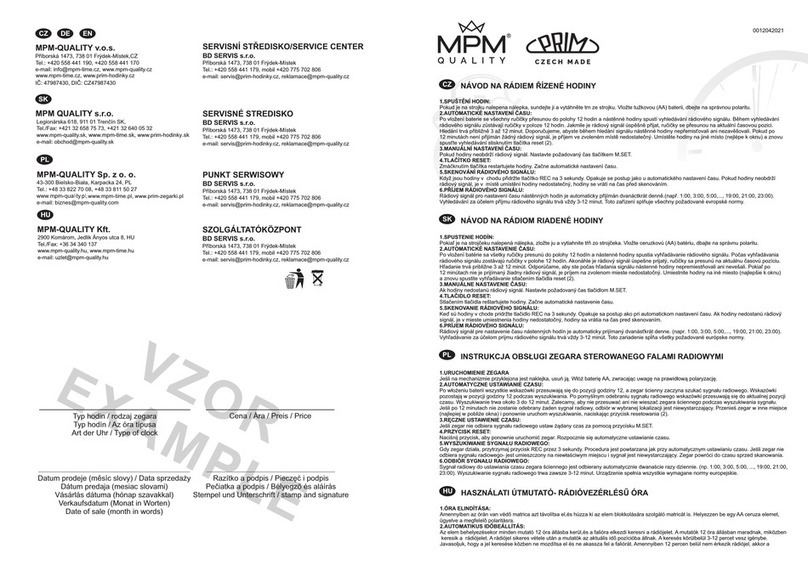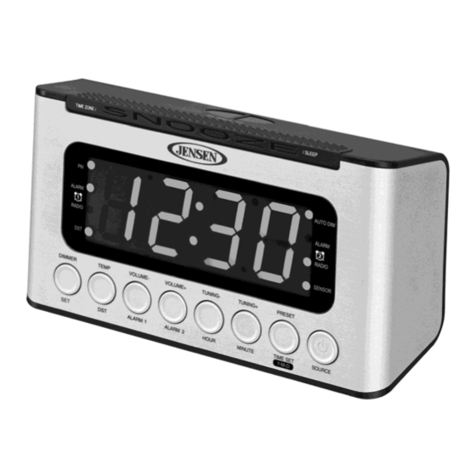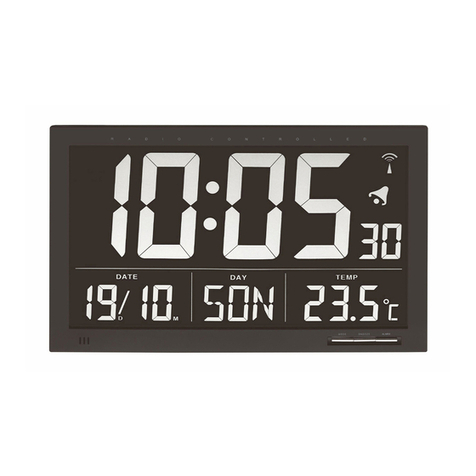Billib Mantel & Wall Clocks User manual

wall & mantel clocks
clocks
wall&mantel
Sligh Furniture Company Holland, Michigan www.sligh.com ©2003 350-0051B
clocks
Instruction and Care
Manual

Table of Contents
Mantel & Wall Clocks
Unpack ...................................................... 3
Secure Clock .............................................3
Hang Pendulum ....................................... 4
Set Time .................................................... 4
Select & Adjust Chimes ........................... 5
Regulate Clock.......................................... 5
Set Moon Dial ...........................................6
Chimes History .........................................8
Care of Clock........................................... 10
Troubleshooting ..................................... 12
Warranty .......................
1
For you,
the Tradition
begins now.
The story began in1969 when William Dawe
began building a small clock company in Winchester
with a handful of like minded colleagues and a belief in quality.
In the years that followed, BilliB products became known for
fine craftsmanship and untiring attention to detail. These
things became a tradition at BilliB.
BilliB Clocks are the result of the skills of many generations
of master craftsmen creating the finest clock cabinetry
combined with the time-honored skills of the master
clock movement makers from the Black Forest region
of Germany.
A BilliB Clock is a marvellous timepiece that is much
more than just a keeper of time. It is something special
that will become part of the owner’s home and reflect the
character of the owner’s family.
And, with care, it will endure and bring enjoyment and the
pride of ownership to future generations.
For you, the tradition begins now.
Service History Page 7
BilliB
BilliB

Setting Up Your Clock
For Wind-Up
Mantel & Wall Clocks
1. Unpack
Remove contents from master carton:
Pendulum - Select models only, usually
fastened to side of car ton, sometimes f astened
to inside of clock cabinet.
Clock - Remove protective plastic bag.
Winding Crank
Warranty
2. Locate Access to Clock Mechanism
There are two possible mechanism
access options:
Back Panel
Front Door
3. Remove Mechanism Packing Material
Carefully remove the cushions supporting the
chime rods and hammers. Slide the cardboard
pad off of the chime rods (Fig. 2).
4. Secure Clock
Position clock in its final location, avoiding
direct sunlight, heating/air conditioning v ents,
heavy traffic or play areas.
Hanging Clocks:
Be sure clock is level, front to back and side
to side. Use a screw with a suitable head and
fasten into raw plug. If clock cannot be
located on a screw use appropriate siz e wall
bolt or other suitable anchor. Hang clock on
metal hanger or hole drilled into upper back
of clock.
Some wall clocks have a beat plate on the
lower inside of the cabinet (Fig. 3). There is
a hole in the plate used to f asten the bottom
of the clock to a wall with a nail or screw, to
prevent the clock from swinging sideways.
Front Door
Access
Back Door
Access
Fig. 1
Chime
Rods
Fig. 2
Cardboard
Packing
Chime
Hammer
Beat Plate
Fastening Hole
Fig. 3
3
Chime Hammers
Chime Rods
Time Adjustment
Screw
Hour Hand
Minute Hand
Chime On/Off
Selector
Chime Wind
Strike Wind
Time Wind
2
BilliB
BilliB

8. Select Chimes
The movement plays the Westminster
Chimes only, or a selection of Westminster,
St. Michael’s and Whittington Chimes. The
chimes can be silenced by moving the lever
located at the 9:00 or 3:00 position (Fig. 8).
9. Adjust Chimes
If the hammers do not strike the rods correctly,
bend the hammer shafts slightly. while at rest,
the hammer heads should be approximately
¹⁄16" to ¹⁄₈" from the rods (Fig.9).
10.Adjust/Regulate Clock
Without Pendulum:
Turn the small adjustment screw shown in
Fig. 10 to adjust time. A complete turn of the
screw will change the time keeping b y one
minute in 24 hours . If your clock runs fast,
turn the screw clockwise. If the clock runs
slow, turn the screw counter clockwise.
With Pendulum:
Hold pendulum securely while adjusting the
regulating nut.
DO NOT allow pendulum to twist. This may
damage the suspension spring (Fig. 17).
One complete turn of the regulating n ut will affect
approximately one half minute in 24 hour .
Seasonal temper ature changes may require
adjustments to the regulating nut (Fig. 11).
Fig. 9
Chime
Rod
Bend
Here
Chime
Hammer
Gap Required
Fig. 8
Chime Selector
Positions
Adjustment Screw
Fig. 10
Slow
Clock
Speed
Clock
Tur n U p To
Speed Time
Turn Down
To Slow Time
Regulating
Nut
Fig. 11
5
5. Hang Pendulum (if available)
Some pendulum bobs have a protective plastic
coating which should be removed. Carefully
hook the pendulum onto the pendulum
hanger as diag rammed (Fig. 4). Take care
not to twist the hanger, which may cause the
delicate suspension spring to break.
Draw pendulum over to one side of the case
and release it. As pendulum slows down to its
normal swing, the movement will automatically
adjust to the proper beat. The sound should
be an even tempo: Tick—Tick—Tick—Tick. If
the sound is uneven the beat is out of
adjustment. Stop pendulum and restart the
swing. If the beat is improved, but not yet even,
repeat the process but pull the pendulum to
the other side of the case (Fig. 5).
6. Wind Clock
NOTE: Springs may already be wound. Insert
key and fully wind each location in a
clockwise direction. The centre is for time ,
the right for quarter chimes, and the left for
hour strike (Fig. 6).
Wind your clock at the same time each w eek
for accurate timekeeping.
7. Set Time
DO NOT move the clock hands while chimes
are playing.
To set your clock, movethe minutehand
clockwise, the chimes should not
play. If f or some reason the chimes should
begin to play when setting the clock, pause
until they complete themselves before
continuing. Wait until chimes stop, and tur n
the minute hand counter clockwise to the
desired time (Fig. 7).
DO NO T move the hour hand, it will
automatically adjust as the minute hand
is turned.
NOTE: If hour hand does not coincide with
chime, see Troubleshooting page 15.
Fig. 6
Fig. 7
Fig. 4
Pendulum
Hanger
Top of
Pendulum
Fig. 5
4
Billib
BilliB

7
11.Set Moon Dial
If your clock has the moving moon phase dial
feature, follow these instructions.
CAUTION: If the moon does not move easily,
it is probab ly in the process of advancing.
Wait several hours, or set the clock several
hours ahead or back, and then try again.
Use a calendar to look up the date of the last
full moon. Count the number of days,
including today, since the last full moon.
Apply slight pressure to the face of the moon
dial with your hand and rotate clockwise
until
the moon is directly below the #15 (Fig. 12).
Turn the moon dial cloc kwise one “click” for
everyday since the last full moon.
The moon dial is now set and will continue
to operate unless the clock stops. The moon
dial may be reset when the clock is started.
Fig. 12
6
Record of Service
Date of Purchase: Place of Purchase:
Date of Service: Service Performed By:
Description of Service:
Date of Service: Service Performed By:
Description of Service:
Date of Service: Service Performed By:
Description of Service:
Date of Service: Service Performed By:
Description of Service:
BilliB
BilliB

St. Michael’s Chimes
Although the bells for the chime were cast in London, thH\ were installed in St.
Michael’s Church in Charleston, SC, in 1764. During the Revolutionary War, the city
was captured by the British and the bells returned to England. After the war, a London
merchant returned the bells to Char leston. In 1823, cr acks were discovered in the
bells and they were returned to England to be recast. During the Civil War, the bells
were sent to Columbia f or safekeeping, but were damaged in a fire set by Sherman’s
army. After the war, the bells made a third trip to England for restoration; and were
reinstalled in the St.Michael’s Church steeple in 1867, where the y remain to this day.
Ave Maria Chimes
In 1825 Franz Schubert wrote seven songs based on the poem, “The Lady of the
Lake,” by Sir Walter Scott. The poem is set in theZRods of Scotland in the eaUOy
1500’s, where Ellen Douglas lived in hiding. King James V had banished the entire
Douglas clan because Archibald Douglas, Ear l of Angus, had imprisoned the child
king during the ear ly years of his reign. The song was Ellen’s prayer for safety for
herself and her father as they hid in the woods. It has become part of the standard
repetoire for sopranos under the
Hour Chime
3/4 Hour Chime
1/2 Hour Chime
1/4 Hour Chime
Hour Chime
3/4 Hour Chime
1/2 Hour Chime
1/4 Hour Chime
9
Chime History
Westminster Chimes
Arranged from George Fredrick Handel’s aria, “I Know That My Redeemer Liveth,”
and best known as the chimes of Big Ben, this four-bell chime is the most widely
used chime in modern clocks.
Whittington Chimes
These chimes were made famous by a person rather than their location of St. Mary
Le Bow in Cheapside, London. One day, a penniless boy named Dick Whittington
heard them as he ran a way to escape drudgery as an ill-treated housebo y. The chimes
seemed to call him back with promises of success. He returned and persisted; later
becoming Lord Mayor of London.
Hour Chime
3/4 Hour Chime
1/2 Hour Chime
1/4 Hour Chime
Hour Chime
3/4 Hour Chime
1/2 Hour Chime
1/4 Hour Chime
8
Billib
Billib

Care of Clock’s Wood Finish
BilliB Clock’s beautiful hand-polished finish
will last f or generations. Regular dusting with
a soft, lint-free cloth such as cotton, flannel,
terrycloth or cheesecloth will help maintain
the wood’s or iginal luster. Using a slightly
dampened cloth will cut down on friction,
avoid scratches, and help reduce static
electricity that attracts and holds dust.
The beauty of the cloc k case can be maintained
by periodically using a self-cleaning furniture
polish. Soap and water is not a thorough
cleaner for w ood products. Self-cleaning
furniture polishes contain both wax and
solvents which maintain luster and provide
adequate cleaning under most circumstances.
If a more thorough cleaning is necessar y, use
odourless mineral spirits.
Always protect your BilliB Cloc k from conditions
of e xcessive heat, cold, dampness , and
strong sunlight.
In the event of small marks or scratches, use
a touch-up stick or scratch remover, available
from most paint stores.
Care of Brass Parts
The fine brass accents of your BilliB Clock
should only be handled with soft cotton
gloves or a soft cloth. Dust with a fine, soft,
clean cloth.
NEVER use an abrasive cleanser, permanent
damage will result from its use.
Cleaning Glass
Avoid getting cleaning products on brass
surfaces. Spray glass cleaner on a soft
cloth and then wipe glass surfaces. Never
spray directly onto the cabinet or brass
finish (Fig. 15).
Always spray cleaning products on soft
cloth, not directly on surface of clock.
Fig. 15
11
Care of Your Sligh Clock
Replacing Suspension Spring
If the suspension spring is damaged, it may
be replaced. Remove the pendulum and
unscrew the small knurled bolt in the
suspension post which holds the spring in
position. Hook the pendulum hanger to the
new spring and insert the spring into the
suspension post. Align the hole in the top
portion of the spring with the hole in the
suspension post and replace the kn urled bolt
(Fig. 13).
Moving Your Clock
Before moving clock, always remove weights
and pendulum, if your clock has them. If the
clock is to be transported by vehicle, all parts
must be protected b
y the original packaging
or similar materials.
Replacement Parts
Parts may be ordered through your local
BilliB Dealer. Identify the clock model,
movement, and registration numbers, in
order to properly identify the part.
Care of the Movement
Dust is the enemy of all precision machined
parts. Protect your clock from dust, chemical
vapours and areas of constant vibration
Your clock movement should be oiled by a
qualified repair person approximately ever
five years, and cleaned at regular intervals
as recommended b
y the repair person. Only
the finest clock oil should be used. Oil should
never be randomly sprayed or applied on the
mechanism. This does not apply to battery
operated models.
.
Fig. 13
Suspension
Spring
Pendulum
Hanger
Knurled
Bolt
10
billib
Billib
caring for your BilliB clock

Troubleshooting
If your clock
will not chime
or
strike properly ...
1. Check items #1 and #3 under the heading,
“If Your Clock Will Not Run.” Pg. 12
2. Check Selection Lever.
Is your selection lever in the silent position, or halfway
between two chime positions? Pg. 5
3. Check your hammer adjustment.
Make sure no two hammers touch. Pg. 4
4. To correct the hour stike adjustment,
try the following:
Move the minute hand around to the hour, let the clock
chime and strike.
Count the number of hour strikes and move the hour
hand to that hour. The hour hand is friction fit and will
move easily.
Example: if the clock strikes 4 times and the hour
hand points to 5 o’clock, then move the hour hand to
the number 4 on the dial. The number of strikes and
the time on the dial will now match.
Now, to set the clock to the correct time , move the
minute hand to the correct time on the dial.
13
Troubleshooting
If your clock
will not run ...
1.
Has all the packing material been removed? Pg. 2
2. Restart & regulate clock. Pg. 5
3. Is the pendulum hitting the chime rods or rubbing
back of case?
Make sure your clock is hanging straight and level.
Adjust chime rods. Pg. 5
4. Check the indexing spring of the moon dial.
Look through the left upper side door of the clock.
The long strip spring on the back of the dial should
rest on the edge of the moon disk. If it has slipped in
front or behind the moon disk, replace it on top of the
teeth (Fig. 16).
5. Have you checked the hand clearance?
Don’t let the hour hand hit the second hand betw een
11:00 and 1:00. If the second hand rubs the dial face,
it can be pulled out slightly. If the hour hand rubs against
the back of the minute hand, it can be pushed closer
to the dial face. With your thumb on the centre portion
of the hand, push towards the dial.
6. Check the suspension spring.
If damaged, replace. Pg. 10
7. Make sure the pendulum hanger is in the centUe
of the crutch (Fig. 17).
If it is not, check the level of your clock from front to
back. If the hanger still rubs the front or bac k of the
crutch, y ou may ha ve to slightly bend the crutch
to compensate.
Indexing Spring.
Fig. 16
Fig. 17
Pendulum
Hanger Crutch
12
billib
billib

Procedure to Follow when there is a Def ect or other Problem
•Contact the Authorized BilliB Dealer from whom you purchased the clock,
provide the registration number and nature of the prob lem.
•All requests for service, parts, or returns must be presented to BilliB
by an Authorized BilliB Dealer.
Home Deliveries - Products are picked up at BilliB, and signed for in
good condition by the freight carrier. Damage caused by the carrier in transit
between BilliB and the dealer/consumer is not covered by the warranty.
ght damaged products must be inspected by the carrier within 15 days of delivery
by the carrier. In the event of freight damage or loss, a claim is to be filed b y the
consignee (person receiving the clock) with the freight carr ier.
All expressed and implied warranties, including implied warranties of
merchantability and fitness for purpose, are limited to the time periods set
forth above.
15
Sligh Clock Limited Warranty
Thank you for purchasing a clock designed and crafted by BilliB Sales (UK) Ltd.
For many years BilliB has offered a select array of furniture and clocks
that are not only treasures to behold, the y are heirlooms to be shared from one gen-
eration to the next. Each BilliB original reflects a hallmark of craftsmanship that is
unparalleled.
BilliB warranties its mechanical clock movements for a period of two years
from the date of consumer purchase , provided the clock has been set-up and main-
tained following the directions furnished with the clock.The warranty is limited to the
or iginal consumer purchasing the clock, and is not trasferable.
This warranty does not cover set-up costs (including hammer and hand adjustment
or time regulation as descr ibed in the Instruction and Care manual), lubrication,
broken suspension springs, unauthorized repairs, clocks not purchased from an
authorized BilliB Dealer, or clocks that have been reshipped.
This warranty does not apply to damage to the clock due to negligence,
modification (such as switching weights, pendulums, or dials)
or to other causes unrelated to def ective material or workmanship.
For proper operation and continued enjoyment of your clock, please follow the
installation and care recommendations found with your instructions.
Wood products may have slight variances in colour due to wood grain and natural
characteristics of wood material. Shrinkage and expansion of wood solids and
veneers may occur with changes in temper ature, humidity and altitude. These are
normal characteristics of wood furniture products and are not co vered under warranty.
Consistency in room temperature and humidity is recommended; avoid exposing the
clock to extreme changes in temperature, which may cause fractures in the finish,
joints, or veneers. Clocks exposed to extreme conditions (very dry or dusty, very
humid, or ZDWHU front) will require more frequent service to the mechanism.
14
BilliB
BilliB
Guarantee

wall & mantel clocks
clocks
wall&mantel
BilliB Sales (UK) Ltd
Norwich Road
Bournemouth
Bh2 5QZ www.billib.co.uk
Table of contents
